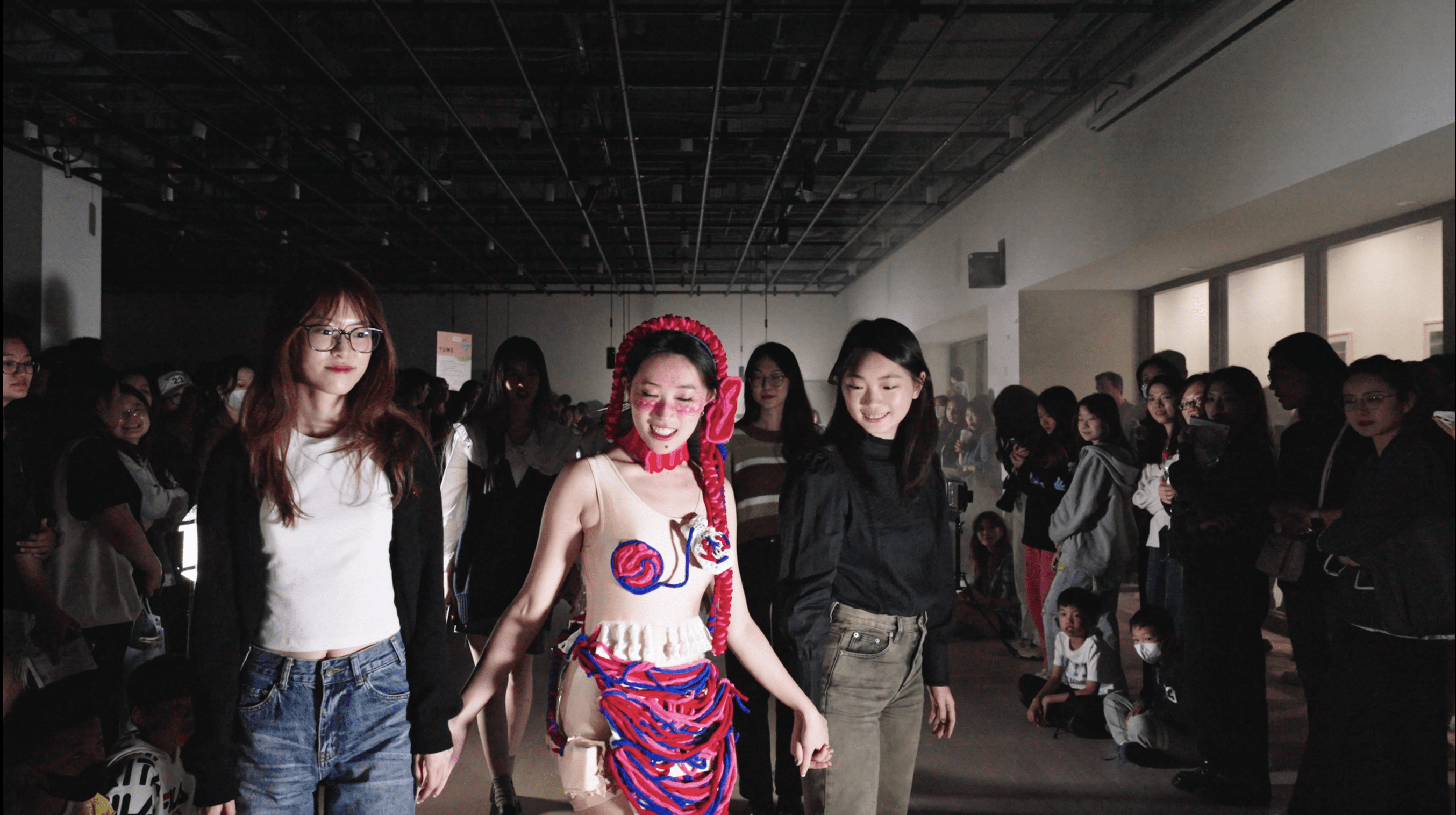#Blog 14: Final Project
Glowworm in Love
Creator: Ran Xu, Younian Liu | Instructor: Marcela Godoy

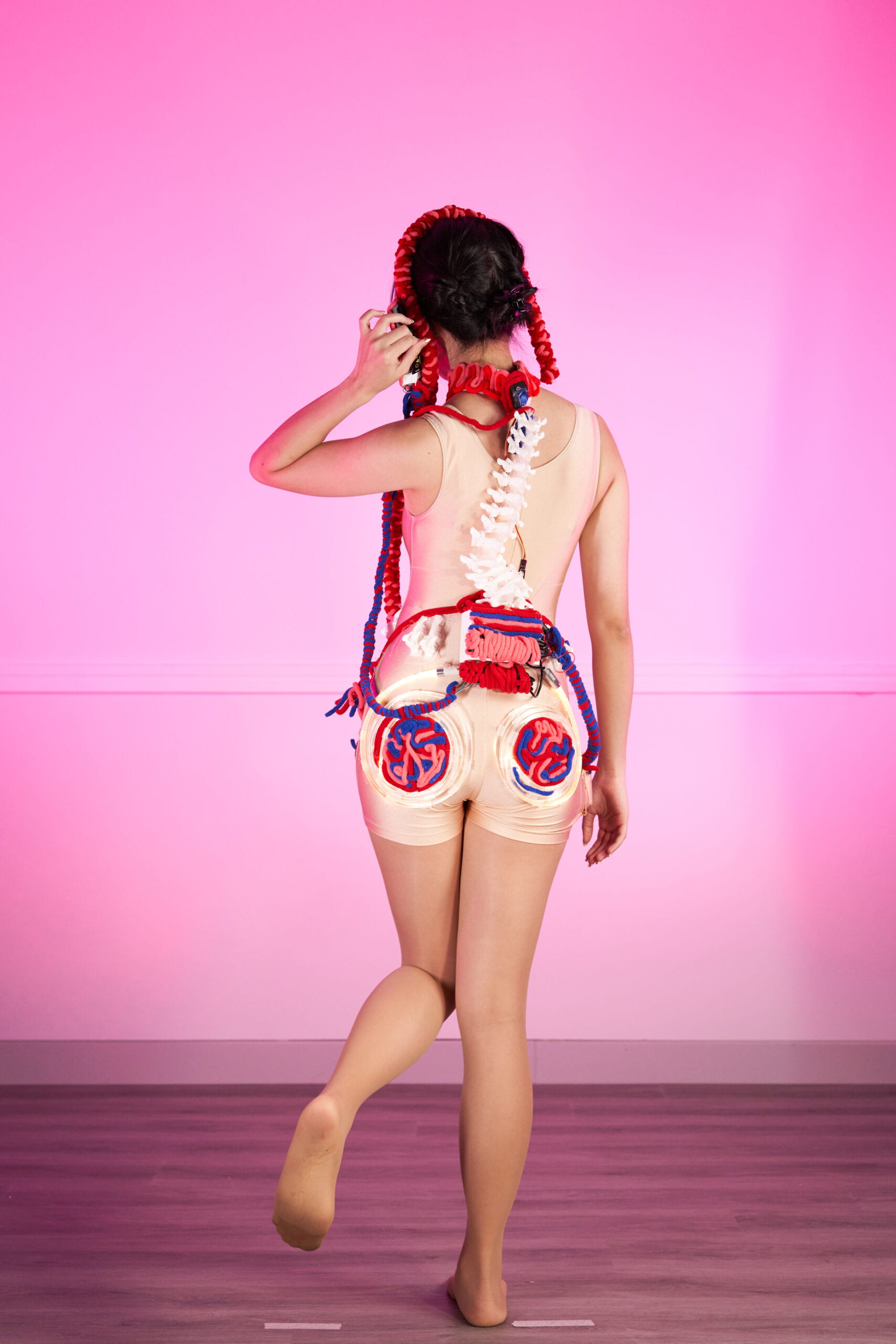
Conception and Design
Conception
The inspiration for this project comes from Selfish Genes. In this book, Dawkins examines childbearing as an evolutionary strategy, arguing that our genes would guide us to choose the spouse that can best reproduce their offspring. Based on this theory, we try to think about what might affect people’s choice of their spouse from both explicit and implicit perspectives. In terms of direct behavior and appearance, it occurred to us that humans signal attraction by showing the curves of their bodies or by gesturing with their eyes. This reminds us of fireflies: this insect attracts its partner at night by flickering its tail. This is the reason why we modeled it with both the buttocks and the flickering feature enlarged. And from a recessive perspective, or from a genetic, we found the research paper by Dewan MC about the influence of pregnancy on women with adolescent idiopathic scoliosis, which concludes that Nulliparity rates were slightly higher among AIS patients, and more frequent infertility treatment was required. Pregnancy-related back pain was common, and while non-disabling, may have been more severe than in healthy women.
And another research talks about how this alternation in the spine, Scoliosis, as a triplanar deformity can impact the gait pattern. This research study concludes that scoliotic subjects have a slower speed of gait due to a shorter stride length and a longer stride time, together with variations in the timing of muscle activation.
So the general logic about this project is that the person wearing this wearable is trying to attract others like an original animal, but at the same time, she is also examined by others in the way that she walks, which also shows the animal nature or the gene that is embedded in human beings. The brain instinctively tells the other whether she is suitable for reproduction or not, which then leads to the judgment of whether she is suitable to be one’s spouse or not. It shows how vulnerable people are in terms of making their “own decision”. Human beings are in fact heavily affected by the genes they have which are out of our control. Different from past work by others in the field, we do not want to express the criticism of the almost primitive charm and natural selection in the process of choosing a spouse, but we want to arouse people’s deeper reflection on love or human characteristics: what makes people tick, and what do people think about besides animal nature? By showing the animalistic nature of human beings that is engraved in their genes, especially in the process of choosing a mate, this work will cause people to think about human nature from the opposite perspective.
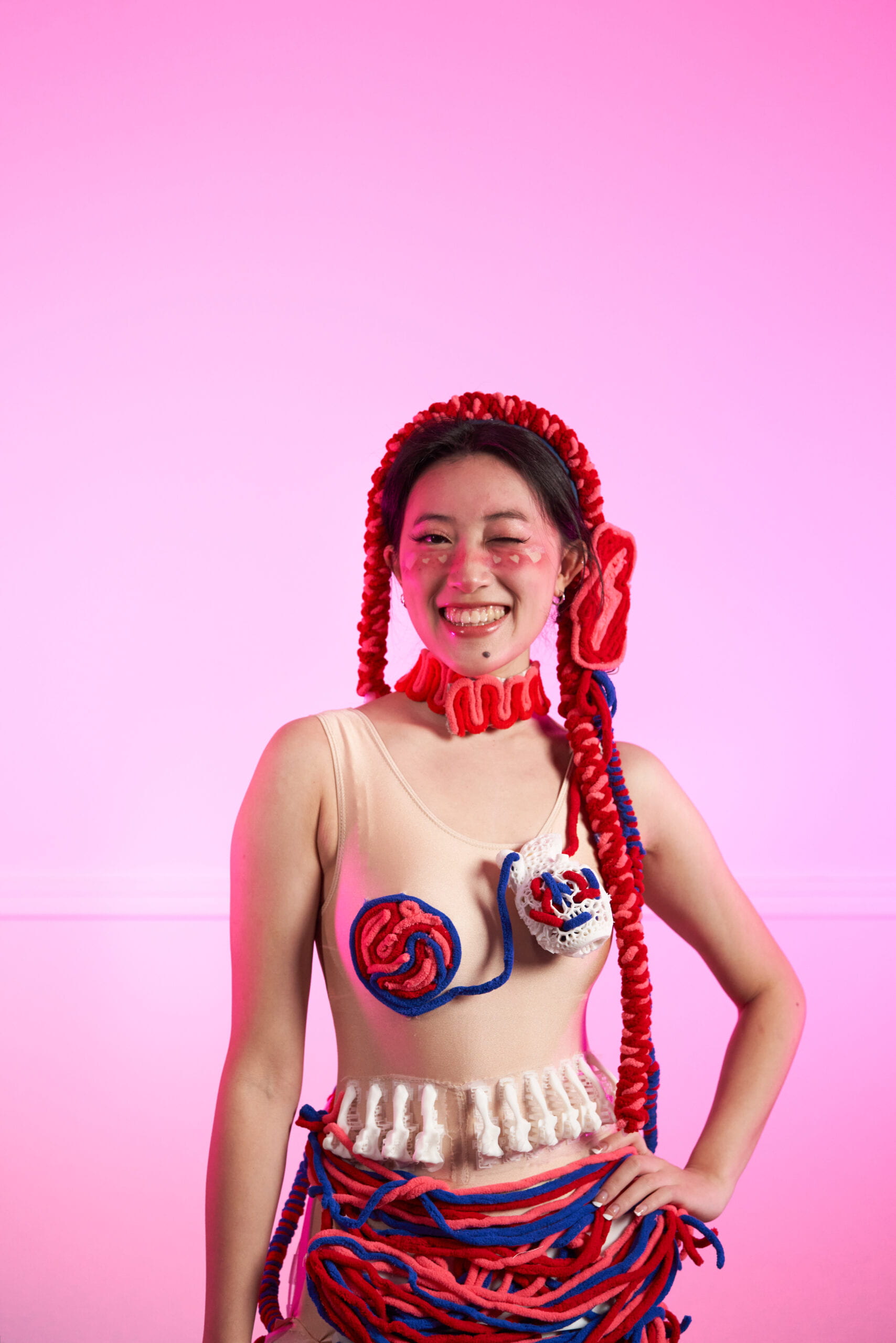

Resources
- Dawkins, R. (2006). The Selfish Gene. Oxford University Press.
- Dewan MC, Mummareddy N, Bonfield C. The influence of pregnancy on women with adolescent idiopathic scoliosis. Eur Spine J. 2018 Feb;27(2):253-263. doi: 10.1007/s00586-017-5203-7. Epub 2017 Jun 29. PMID: 28664223.
- Haber, C.K., Sacco, M. Scoliosis: lower limb asymmetries during the gait cycle. Arch Physiother 5, 4 (2015). https://doi.org/10.1186/s40945-015-0001-1.
General Design
In order to integrate the theories mentioned above, we combine the human body structure with the glowworm, and exaggerate the characteristics of the body parts such as the spine and hips using , to develop the design of an original wearable interactive device and show the animal nature that humans have, especially in the courtship process.
We followed the design of the hairband and necklace from the previous projects in order to use the pressure sensor as a trigger for the whole mechanism. The model presses the sensor behind her ear and makes a teasing movement similar to a hair ruffle, showing a willingness to court, while also triggering the swaying of the spine behind her and the flashing of her hips, adding to the flirtatious intent.

To express the hardness of the firefly’s exoskeleton and the co-existence of sensible and romantic emotions in humans, we have used a combination of both 3D printed and wool materials to achieve a combination of rigidity and flexibility.
In order for the colours to visually express the theme, we simplified the wool into three colours: red for the arteries, blue for the veins and pink for the romantic feelings.

Because the project aims to show the animal aspect of human genetics, we wanted the whole installation to be part of the human body, just like human skin, to make it natural. Therefore, we chose a skin tone base. At the same time, considering that the models would actually have to walk in it, we changed the design several times, adding more design and coverings and fixings on the chest and lower body to improve its stability and viewability on the day of the show.


Fabrication and production
Headband & Necklace
These two are designed to carry the main interactive devices, so stability is the frist priority. We used resilient materials like cotton cloth and pins and neadles instead of glue gun for fabrication. Coloured wool is added to unify the design with the body to connect the head with the spine, expressing the concept of a combined decision making agencies, sense and sensibility.



Pressure Sensor
The sensor is designed to show charming gestures when attracting others, like the flipping of the hair. That’s why we tie it to one side behind the ear.
This sensor was previously designed to use conductive fabric to achieve controlled light and dark changes in the model. However, considering that the change in light and shade is not as visible on the catwalk as it is on and off, and that the model’s movements would be too rigid and forceful if the conductive fabric needed to be controlled and the aesthetic of the flirtation would be lost, we switched to a more stable and less forceful pressure sensor, encoded in a 1 and 0 mode controlled by a detection value valve.
Final Code:
#include <Servo.h> //header for controller servo Servo myservo; //keeping name of servo SERVO itself int pos = 0; int sensorvalue = 0; int s_pin = A0; void setup() { // initialize serial communication at 9600 bits per second: Serial.begin(9600); pinMode(s_pin,INPUT); pinMode(9,OUTPUT); pinMode(6,OUTPUT); pinMode(11, OUTPUT); //PWM output to servo myservo.attach(11); } // the loop routine runs over and over again forever: void loop() { // read the input on analog pin 0: int sensorValue = analogRead(A0); int newValue = map(sensorValue,0,1023,0,255); // print out the value you read: Serial.println(sensorValue); if (sensorValue > 50){ digitalWrite(9,LOW); digitalWrite(6,LOW); } else{ digitalWrite(9,HIGH); digitalWrite(6,HIGH); moveServo(); } delay(1); // delay in between reads for stability } void moveServo() { for (pos = 30; pos <= 150; pos += 1) { // goes from 0 degrees to 180 degrees // in steps of 1 degree myservo.write(pos); // tell servo to go to position in variable 'pos' delay(10); // waits 15 ms for the servo to reach the position } for (pos = 150; pos >= 30; pos -= 1) { // goes from 180 degrees to 0 degrees myservo.write(pos); // tell servo to go to position in variable 'pos' delay(10); // waits 15 ms for the servo to reach the position } }
Spine
The spine is enlarged because according to the above theory, human’s attraction can be hugely deteermined by the spine. So we mimic the curvature of the spine (the condition of the spine-straight or not), which is is an important part of the attractiveness,I used the opportunity of the weekly assignment to try and print the bone. The prototype went well, except for the struggle to get the supports.

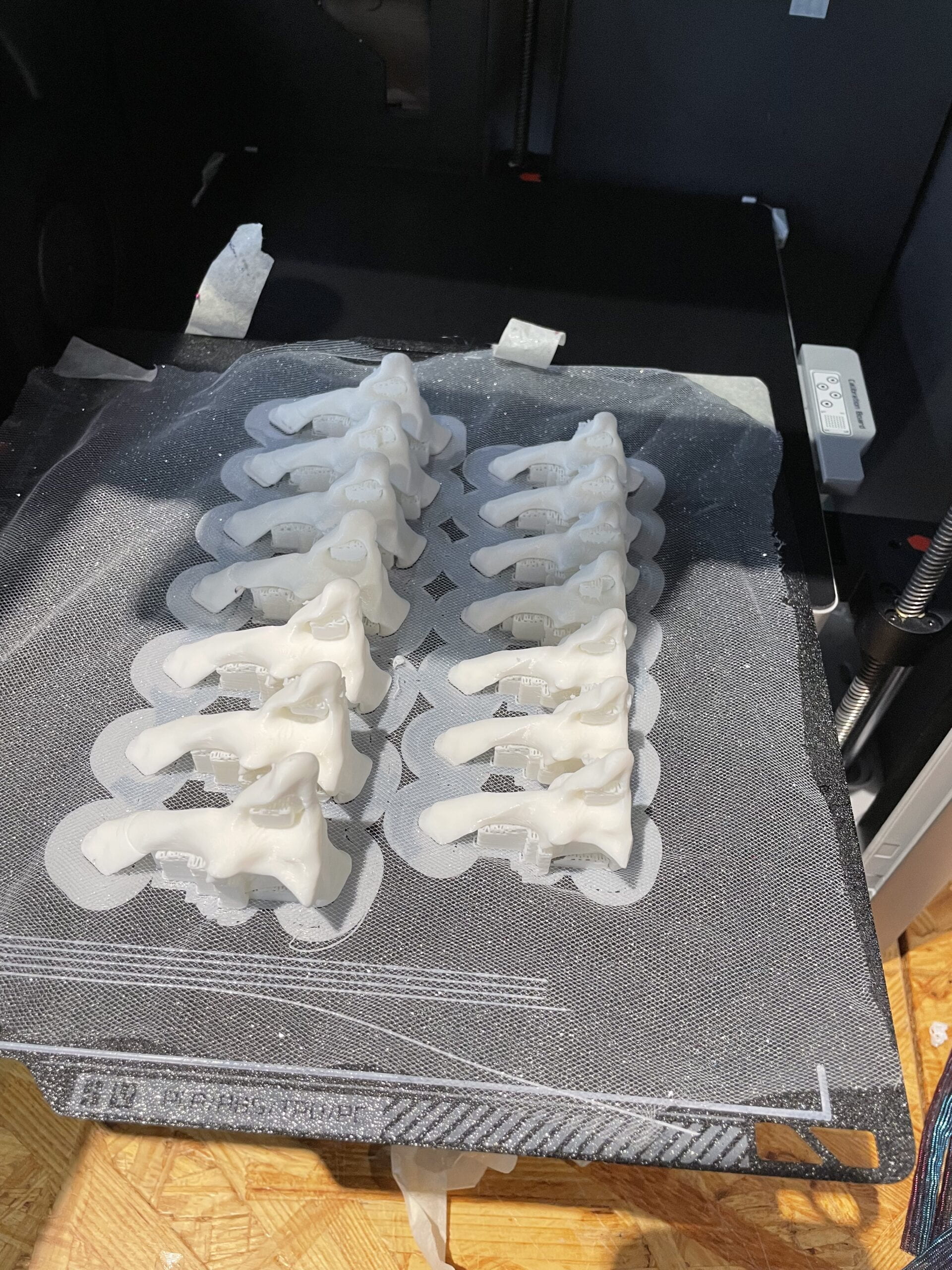
However, we discovered that the 3 columns of bone were a little too small for the printer and the support itself was not strong enough when we tried to print more at once. So, we made it into 2 columns and made the bones bigger. While making the adjustment, we failed to observe that the bases of all the bones were not exactly level, therefore there were some areas of the bones where we were unable to remove the support because doing so would have caused the bone to slip off the gauze. So, we had to make another adjustment before reprinting them.

The 3D printing process is actually quite unstable and sometimes it somehow breaks down. We didn’t want to waste our relatively intact piece, so we made those relatively imperfect parts into a girdle, making them the dividing line between human features and insect features. Because the bones were rather large, there was no way to put them on a sewing machine and sew them by hand. Thanks to Charlotte’s patience! The parts she sewed were often neater than mine hahahaha~

We tested the last bone that printed most successfully as our spine. In project 2 we tried the mechanics of converting curved motion into linear motion, but when it came to the actual installation we found that we didn’t have anywhere to fix the slide for that mechanism, so were going to just use the MOTOR for the motion. The previous motor motion did not work well, mainly because the fan blades on the motor tended to come off. We used the right size screws to hold it in place and the results were unexpectedly good as well.
Buttocks
The Buttock exhibits the main feature of glowworms with LED and optical fiber, mimic the flashing bottom of glowworms at night attracting partners.
We also added pattern of mixed control of affection using blue and red to the center of the but so that it can echo with upper body (especially the chest part) that is filled with wool.

In Project 1, we fixed the thin optical fibre race inside the water pipe. The issue we ran into at the time was that the LEDs did not fit securely enough into the water pipe to emit light, which resulted in extremely feeble light being produced. It was also really challenging to get the fibers through the water pipe.
In the final project, we have improved this. First, we got a larger diameter (6mm) fiber and a 5v LED of the appropriate size, which we twice tried to attach to our “skin.” The initial effort involved poking a hole in the fiber optic and fastening it with a screw.(Appreciation towards Johnny for lending us a screwdriver and Andy for showing us how to operate a drill.) The issue was that the fiber’s capacity to conduct light would be diminished by the middle-cut. We gave up on this possibility and decided to utilize a water pipe instead. This time, as opposed to the prior,we utilized a short piece of water pipe and stitched it at the curve to conceal it. I admit it is a bit ugly, but we don’t have the time to look for other materials at the time.
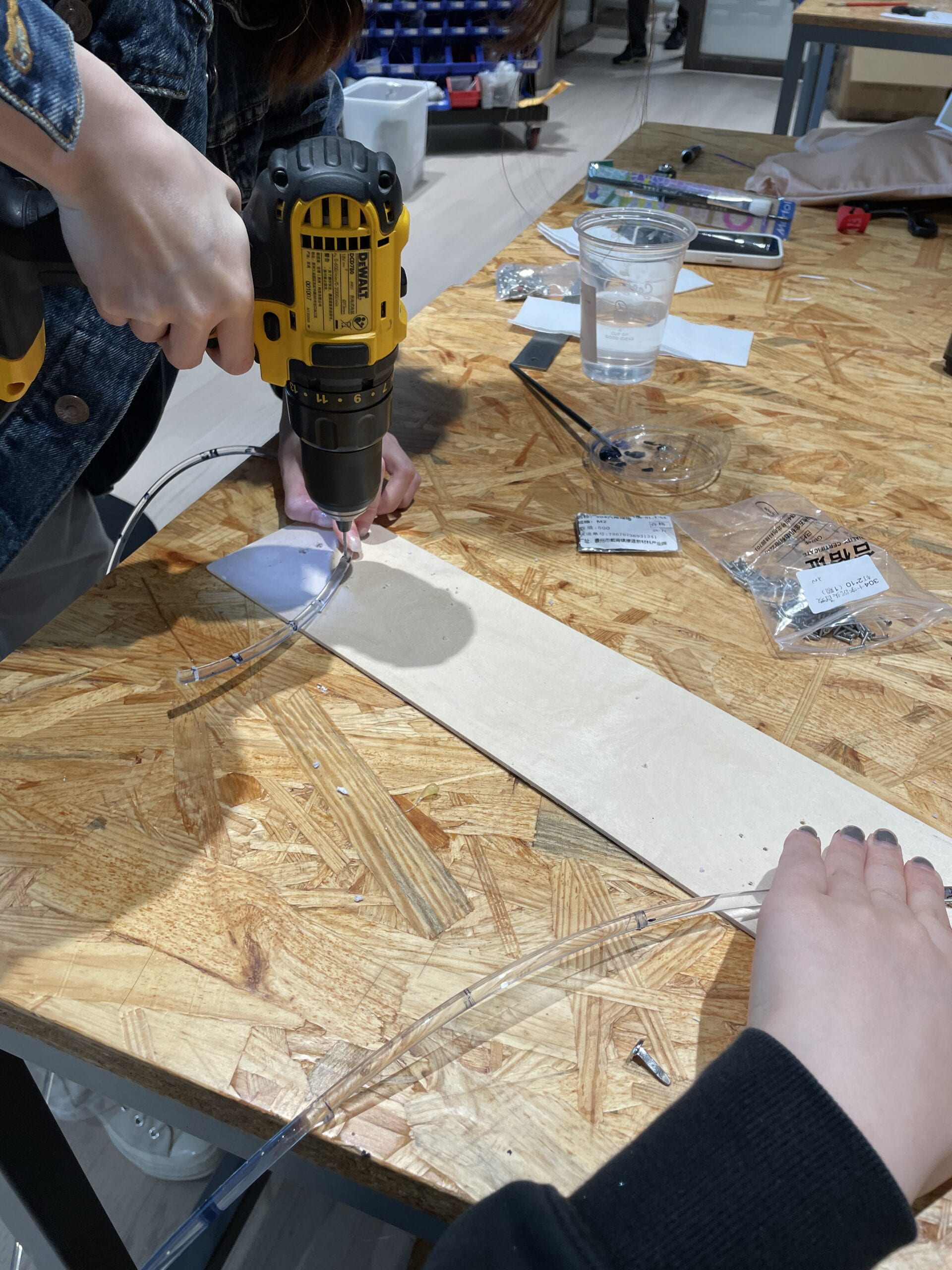
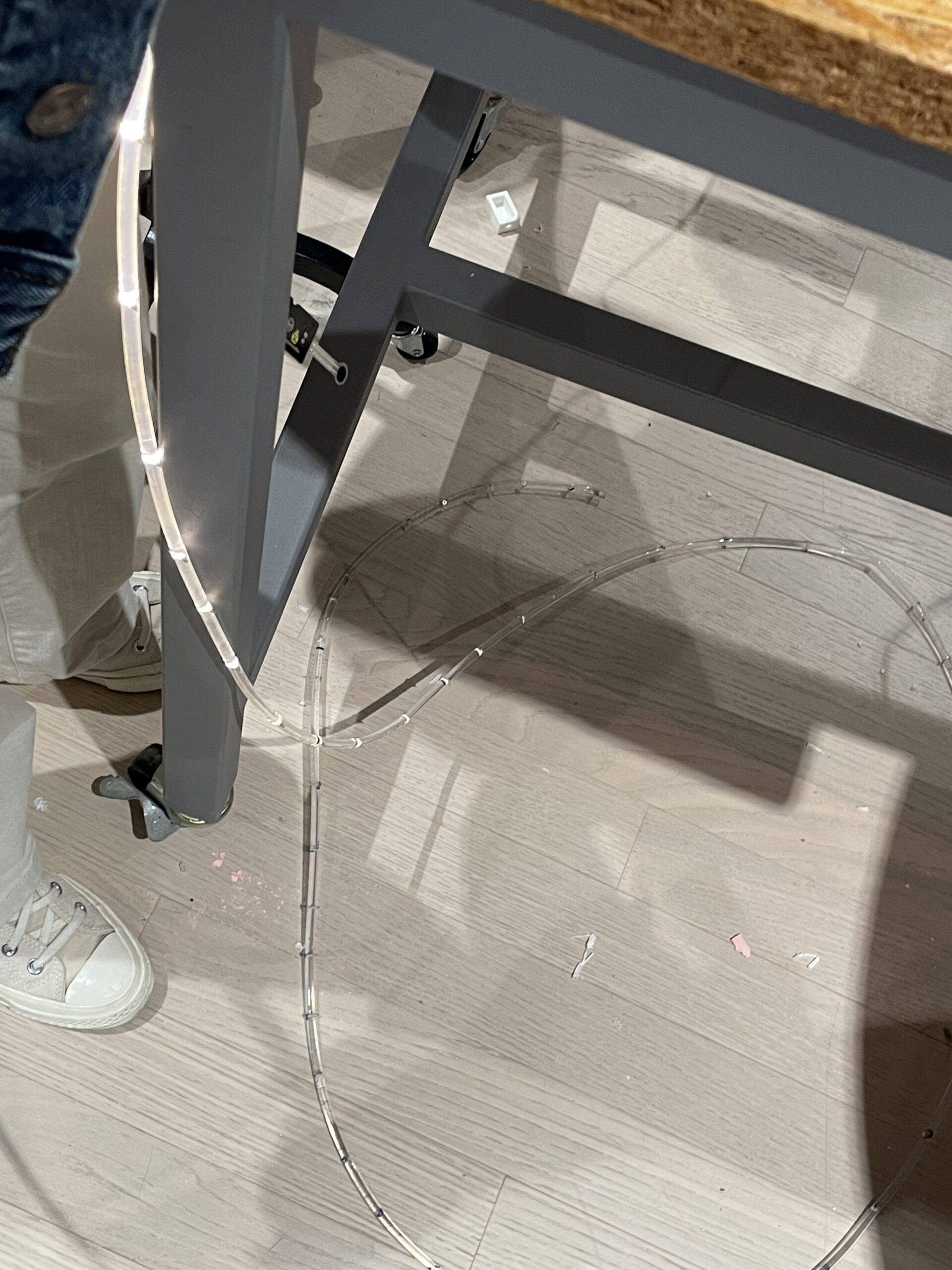


Box for wires
To store our cords and motors we printed 2 boxes and punched holes in them to hold them in place with stitches. As both boxes have the function of holding the motor in place, we went to great lengths to sew them very firmly to the skin. But the waist box was still too small after two resizing attempts because we underestimated the size of the wires, especially the USB cable. So we ended up having to pin them to the waist individually and put the battery on the legs. For aesthetic reasons we wrapped them in wool to make them look less obtrusive.



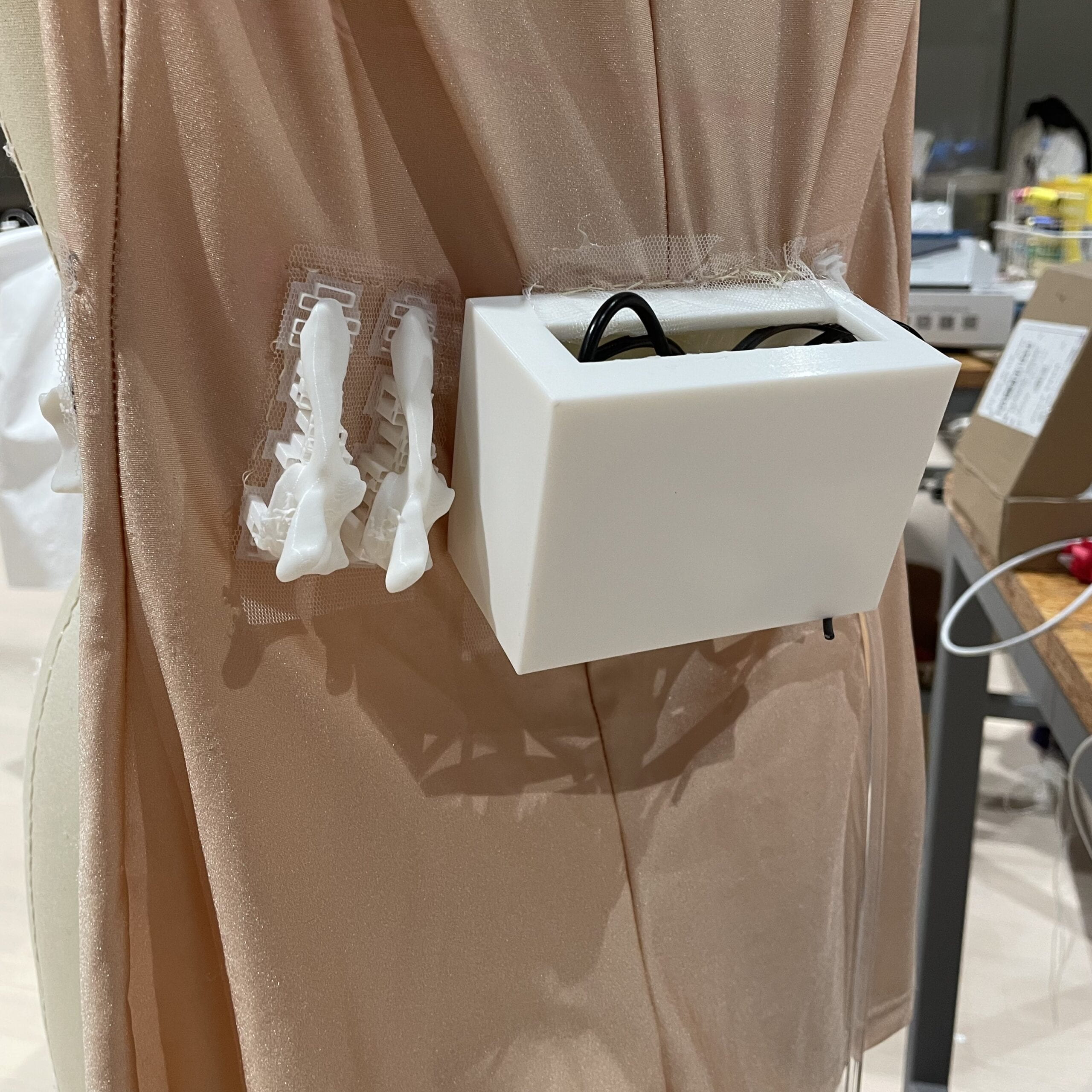

Heart
In order to demonstrate both sense and sensibility, we followed Marcela’s advise and converted the wool heart shape we had previously crocheted into a 3D-printed heart. We then added red and blue wool to the heart’s center to symbolize veins and arteries. We first decided to print the entire heart during the actual printing process, however due to the quantity of holes and the amount of support needed, we had trouble separating the support from the actual heart.

As a result, we printed the heart in two parts and adhered them together before weaving.


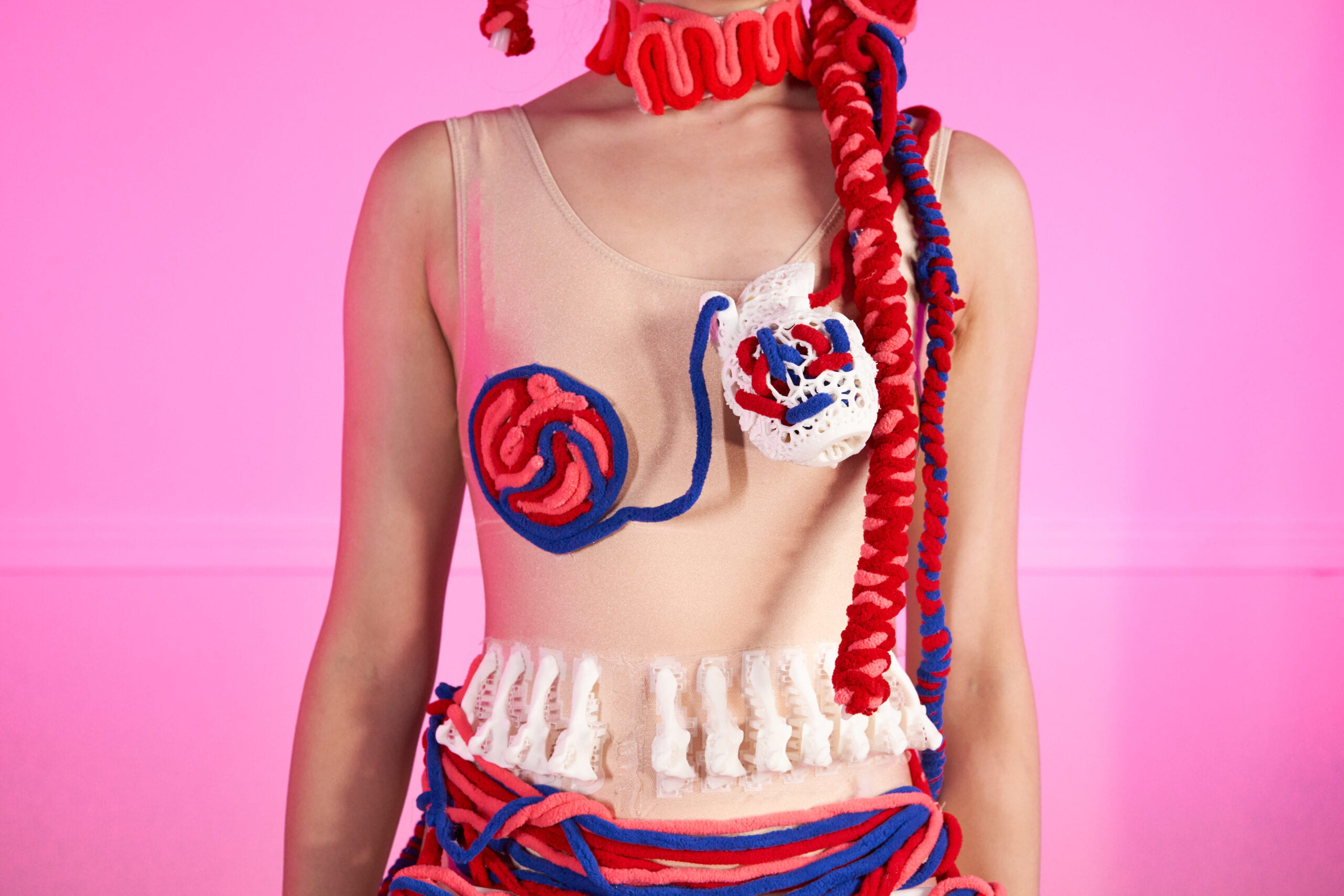
Armour
The last phase of our creation involves the designs for the belly and chest armor. These patterns were created to cover the underwear and safeguard the model. Our current belly armour was originally intended to be all pruduced in wool, but we combined insect exoskeleton designs and altered an online armour model made for a pet dog to add more insect components to complement our animal motif. We also included pieces of wool because the white color of the print was too repetitive to go with the overall concept. The armour’s size is too big so we had to order from outside vendor.



References
- Peaucellier–Lipkin linkage: https://en.wikipedia.org/wiki/Peaucellier%E2%80%93Lipkin_linkage
- Glowworm: https://www.nationalgeographic.com/animals/article/151020-glowworms-females-selection-finland-animals-science
- Heart: https://www.thingiverse.com/thing:2704299; Armor: https://www.thingiverse.com/thing:4813609; Spine: https://www.thingiverse.com/thing:4801717
Labor Division
We basically shared all the work equally. We communicated online during the days I got Covid and Charlotte did the physical part more those days. I worked online and drew the updated design and labeled all the problems we need to solve. Other than the things we did together, I mainly did the 3D printing modeling, communication with outside vendor, soldering, concept research and drafting,presentation structure, and styling (makeup and hair) for the model. And I feel that I made many of the design and production decisions maybe because the concept is raised by me.




REFLECTION & CONCLUSIONS
- This time, some of the model are done by adjusting existing models available, which I think is not exactly tailored to our design. So, next time, we will need to start from scratch and make the full installation wholey based on our work.
- We also realized during the process that the 3D Printing time is not very controllable, so in the future, we would need to prepare more space for that.
- At first, I only think of this preject as making a wearable on the body but not a whole “clothe”. So the design of our project may not be very complete compared to other groups. We still need to work on the asthetic aspects.
- We might as well also prepare a Mannequin that matches our models size so that the production process would be much more fluent.
- We bought spay paint and planned to add final tough to the models. But do to time limit we didn’t manage to do that, so the pieces are a bit raw.
In general, it has been an exhausting, desperate, yet fantastic and dreamy journey. The mechanisms working so stably and the runway are definitely huge surprise.

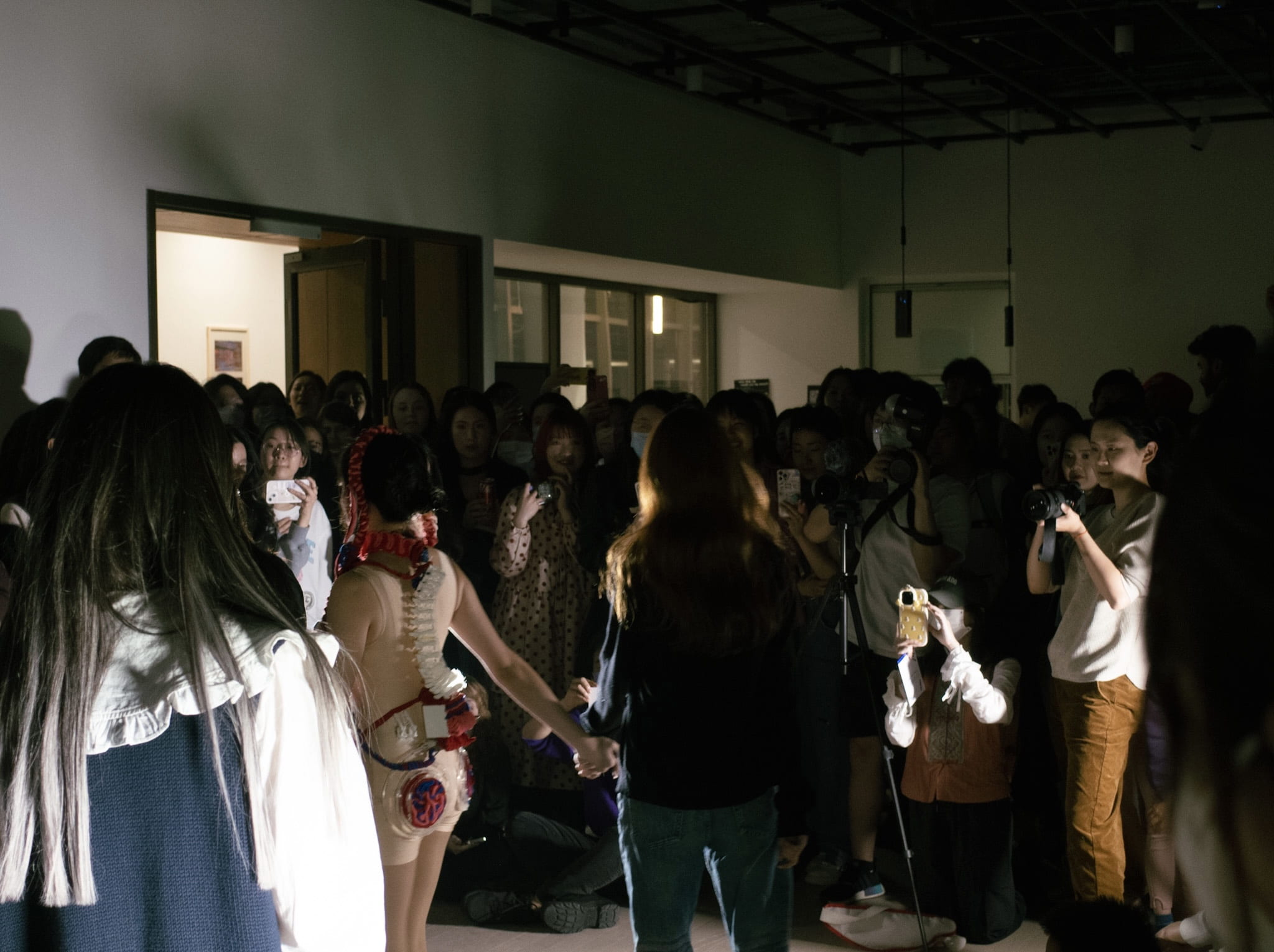
Many thanks and love to Prof. Godoy for not minding our lack of skills and being so patient all the way. Many thanks and love to our amazing classmate who has helped us with techniques and supported us mentally. Many thanks and love to make-up artist Beatrix and our cutest model Jade! Many thanks and love to Charlotte for being a tender and responsible companion. Though we have very different energy peek time (she is more mentally active during the day, while I prefer to work on complex problems late at night), she is very understanding and we can even use the time difference to alternate our production to save time. We are really support for each other with those long working days and nights. My favorite class this semester!!

